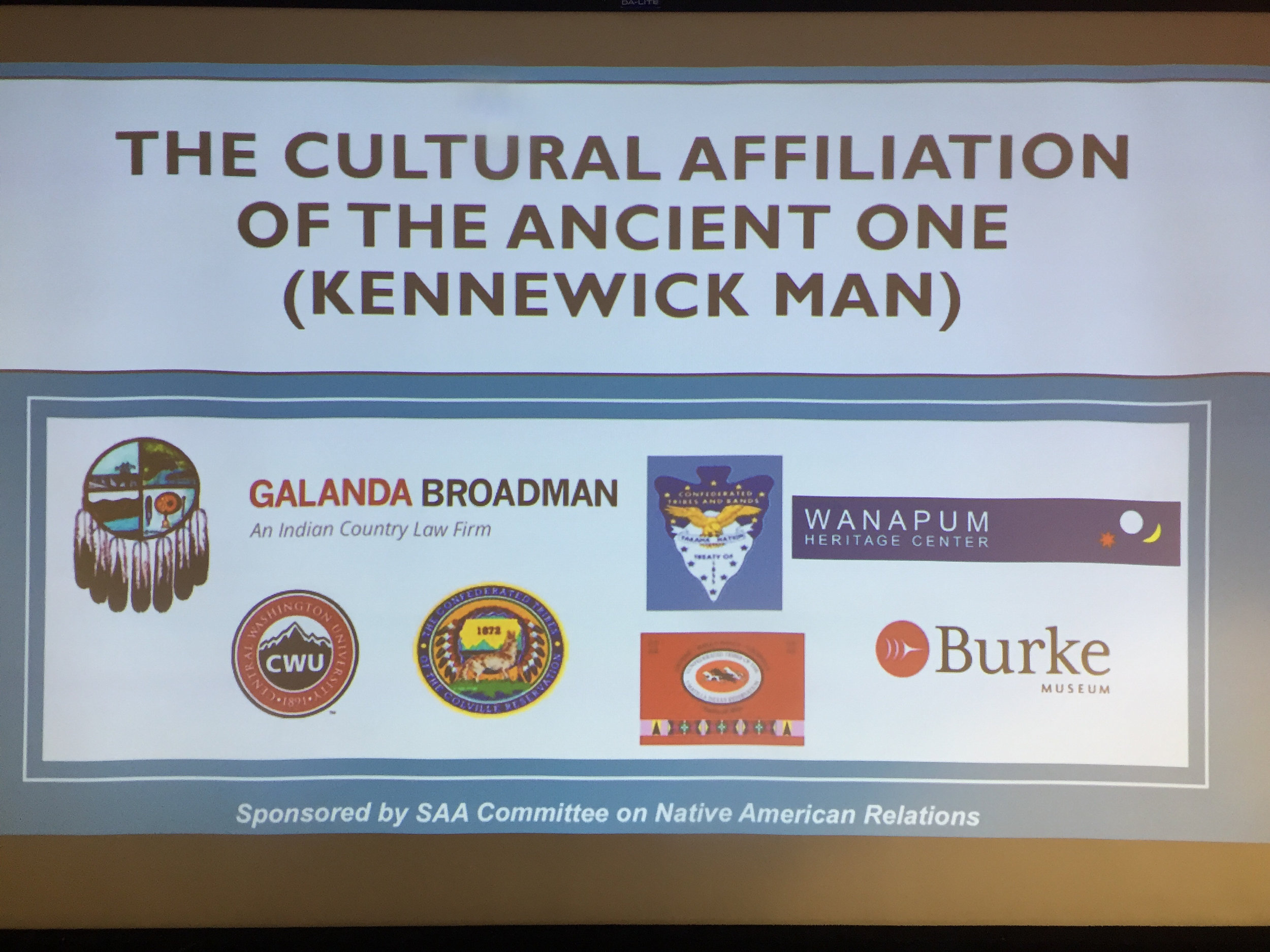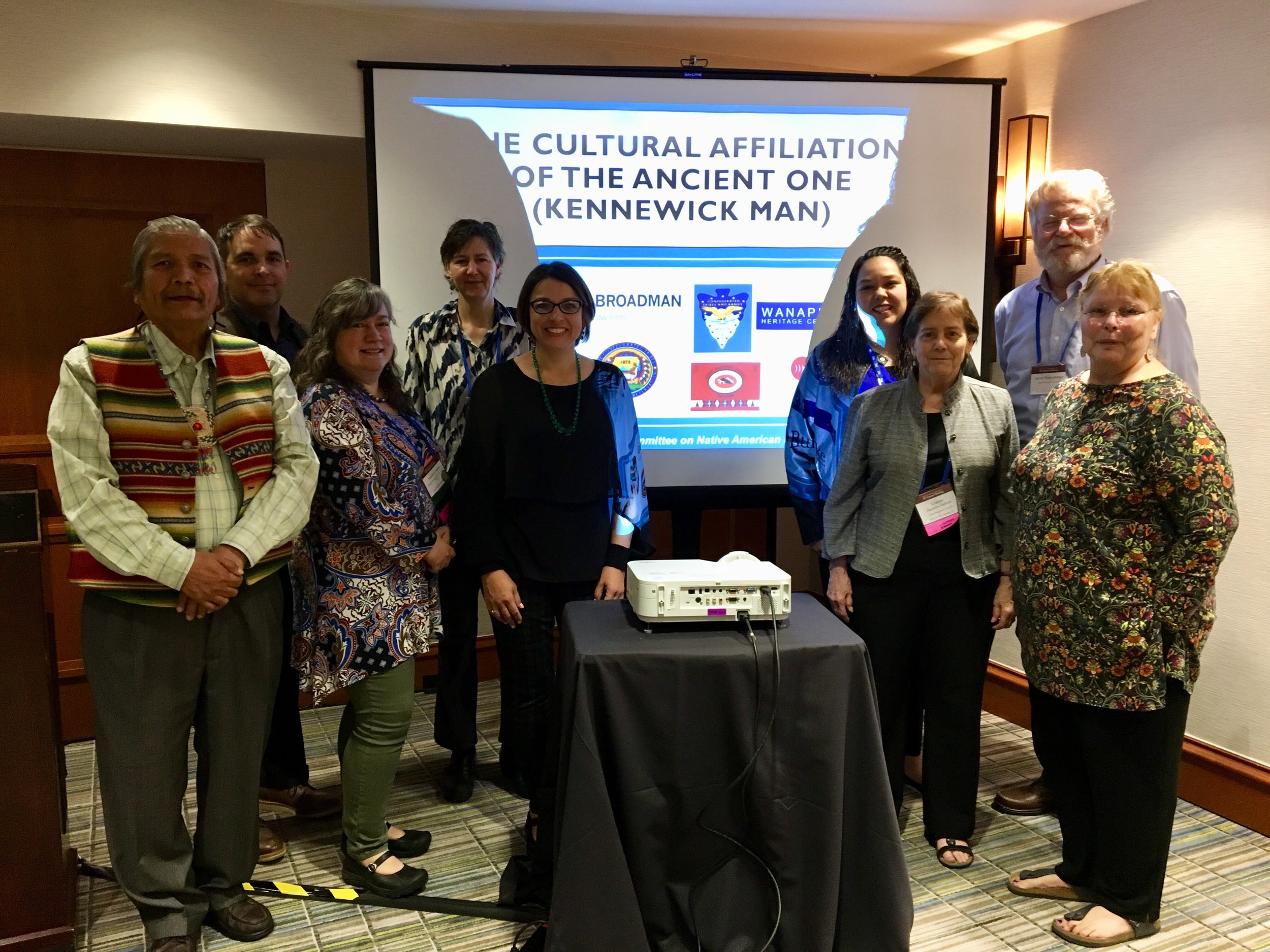This blog is based on a talk that Gabe Galanda gave at Harvard University's Kennedy School of Government, in conjunction with Harvard Project on American Indian Economic Development forum, "The Next Horizon," on May 1st. Gabe thanks Seattle City Councilwoman Debora Juarez, Dr. David Wilkins, and Professors Robert Williams, Matthew Fletcher, and Eric Eberhard for their teachings and research insights.
"The culture comes from the language." -- Darrell R. Kipp, Blackfeet
We were not “governments” in 1492.
We were not “nations” in 1787.
We were not “citizens” in 1823 or 1832.
We were kinship societies when Columbus arrived to Haiti, when the framers drafted the Constitution, and when Chief Justice John Marshall authored the Marshall Trilogy.
We belonged to our societies as members, as in family members, not as citizens.
We were self-governing, but we were not governments.
“Native nations” and “tribal citizens” are racial formations, established by the colonizer under its processes—not ours.
Native nationhood was the mode by which Treaties and other laws could be forged to dispossess us of our lands—it was a mode of annihilation.
Native nationhood, to the extent exclusive of traditional kinship norms, remains a mode by which indigenous peoples will be extinguished.
If we continue to determine who belongs through use of racial formations, rather than through kinship rules, we will eventually be terminated. Just look at the Trump Administration’s most recent treatment of tribes as a racial group for federal Medicaid reimbursement purposes.
Unless we return to the ways of kinship, we will eventually cease to exist.
Who were we?
Vine Deloria, Jr.’s auntie, Ella Deloria, said it best, writing from New York City in 1944:
All peoples who live communally must first find some way to get along together harmoniously and with a measure of decency and order. This is a universal problem. Each people, even the most primitive have solve it in its own way. And that way, by whatever rules and controls it is achieved, is, for any people, the scheme of life that worked, The Dakota people of the past found a way: it was through kinship.
Kinship was the all-important matter. Its demands and dictates for all phases of social life were relentless and exact . . . . By kinship all Dakota people were held together in a great relationship that was theoretically all-inclusive and co-extensive with the Dakota domain. Everyone who was born a Dakota belonged in it; nobody need be left outside. . .
[T]he ultimate aim of Dakota life, stripped of accessories, was quite simple: One must obey kinship rules; one must be a good relative. . . . In the last analysis every other consideration was secondary—property, personal ambition, glory, good times, life itself. . .
[T]hose who kept the rules consistently and gladly, this honoring all their fellows, were good Dakotas—meaning good citizens of society, meaning persons of integrity and reliability. And that was practically all the government there was.
“Speaking of Indians,” "Part II, 'A Scheme of Law That Worked,'" at pp. 25-32.
Illustrating the still pervasive universal nature of kinship and belonging at birth, as Ms. Deloria described, are Articles 9 and 22 of of the United Nations Declaration on the Rights of Indigenous Peoples, which provide respectively:
Indigenous peoples and individuals have the right to belong to an indigenous community or nation, in accordance with the traditions and customs of the community.
Indigenous peoples have the right to determine their own identity or membership in accordance with their customs and traditions.
Rather ironically, under the colonizer’s words governing its own citizens' belonging, citizenship is guaranteed, quite simply, to all who are born unto the land known today as the United States. That bedrock American rule is established by the Constitution’s Fourteenth Amendment and affirmed by 5 U.S.C. 1402, titled “Nationals and citizens of United States at birth.”
Pre-conquest we, too, were inclusive peoples, who identified and governed according to very simple but exacting kinship rules. But those ancient rules began to vanquish in the 19th Century.
How did we become "nations"?
In 1823, in Johnson v. McIntosh, U.S. Supreme Court Chief Justice John Marshall, immediately before declaring us “fierce savages,” observed: “When conquest is complete . . . the conquered inhabitants can be blended with the conquerors, or safely governed as a distinct peoples.”
By 1831, he “denominated” us “domestic dependent nations,” in Cherokee Nation v. Georgia. Whether as "savages" or "dependent nations," these are racial formations from which modern Native nationhood has evolved.
Exclaiming the United States' racial subjugation of indigenous peoples, the following year in Worcester v. Georgia, Justice Marshall explained:
The words ‘treaty’ and ‘nation' are words of our own language, selected in our diplomatic and legislative proceedings, by ourselves, having each a definite and well understood meaning. We have applied them to Indians . . .
The “our” and “we” is the colonizer. Words like “nation” were the colonizer’s—not ours.
Lest you have any doubt about that term, as applied to the then so-called Cherokee Nation in Worcester, consider Professor Rennard Strickland’s words in “Fire and Spirits”:
Englishmen were looking for Native versions of British courts and . . . concluded, in a supreme gesture of ethnocentrism, that the Cherokees had no system of law.
In truth, the Cherokee conception of law was simply different from the more traditional Western idea of law. To the Cherokees law was the early representation of a divine spirit order. . .
The ongoing social process could not, in the Cherokee way, be manipulated by law to achieve policy goals. There was no question of man being able to create law because to the Cherokee the norms of behavior were a sovereign command from the Spirit World. Man might apply to the divinely ordained rules, but no earthly authority, was empowered to formulate rules of tribal conduct.
Indeed, treaties and positive law, including those establishing tribal “nationhood” and “government” in the 1800s, were then the colonizer’s words and ways—not ours.
As to Cherokee kinship and belonging, Professor Strickland offers these words:
Society is divided into separate classes and ranks which were created by the Spirits. There is no significant stigma attached to class membership. All classes, both men and women, are of great value socially and have important and useful roles in Cherokee society. . . .
Legal norms existed on four levels among ancient Cherokees. . . .
The first of the norms were those governing relationships between man and the supernatural—the Spirit Beings. Second were the norms prescribing conduct of the individual Indian towards specific public order, issues relating to the entire village or tribe. Next were the norms concerning clan rights and duties. Finally, there were a limited number of norms on individual or personal questions.
In other words, kinship rules and norms pervaded, until the Marshall Trilogy took hold.
How did we cease self-rule by kinship?
Aided by the Marshall Trilogy's discovery doctrine and native nationhood model, Treaties and the General Allotment (Dawes) Act of 1887 were promulgated. Each of those federal laws were intended to, and operated to, pulverize our kinship ties to multi-millions of acres of homelands.
The Dawes Rolls, created by the U.S. in only six months and thus demonstrably incomplete and incorrect, were especially destructive to kinship. Kinship societies-turned-tribes have since used those federal rolls as their so-called base rolls—as the foundation of who belongs, or doesn’t.
Then in 1934, the U.S. Congress passed the Indian Reorganization Act (IRA), deciding for tribes, who belongs to tribes, declaring Indians to be “members” if ½ degree or more of "blood quantum" and if in residence on reservations.
Blood quantum is a racial fiction; one's human blood doesn't segregate mathematically.
Residence, although once a predominate form of kinship, took on a new meaning after arbitrary lines were drawn by the colonizer to concentrate Indian homelands onto reservations, in order to allow Manifest Destiny to flourish from coast to coast.
Now, 85 years later, the colonizer’s membership rules—and norms—indeed racism and classism—have supplanted kinship rules. That is why we refer to ourselves as a race of “full bloods,” “half bloods,” and “mixed bloods”; and classes of “res Indians,” “off-res Indians,” and “urban Indians.”
Under the IRA, family members became political members of tribal constitutional governments and corporate entities, particularly under boilerplate constitutions and corporate charters foisted upon tribes by John Collier and his followers, including a nascent National Congress of American Indians. Under those new tribal laws, tribal relatives can be “disenrolled” from the tribe.
I have yet to discover an indigenous word that translates even close the word “disenrollment,” exclaiming the wholly foreign nature of that concept to us as indigenous peoples.
How did money over-rule kinship?
Dating back to the federal Lacey Act of 1906 and continuing through the Indian Gaming Regulatory Act (IGRA) of 1988, belonging has been increasingly individualized and monetized, through “pro rata” or “per capita” distributions of tribal communal wealth, by tribes to tribal members. That federally designed regime is also intended to pulverize us into oblivion.
In fact, fueled by that new individual wealth, and corresponding graft and greed, 15% of today’s federally recognized tribes have disenrolled their kin. In the case of the Elem Colony of Pomo Indians, tribal politicians are attempting to disenroll 100% of the tribe’s on-Colony population. They are purportedly legislating themselves into oblivion. It is self-termination.
Addled by per capita greed, tribes are also imposing enrollment moratoria, meaning no longer enrolling or including their children among those who belong.
Think about that for a minute.
We talk, almost tritely, of the sustaining as indigenous peoples for sake of the Seven Generations. Yet an increasing number of tribes are severing inter-generational kinship ties. They are disowning their Fourth, Fifth, Sixth, and Seventh Generations.
In today's final analysis, kinship is secondary—to money. Venal exclusion has supplanted traditional inclusion.
Where do we go from here?
We cannot throw out the Native nationhood model. Or abrogate Treaties, or IRA Constitutions or Bylaws. Or abandon tribal capitalism via economic development.
Tribes would be terminated without the modern nation-to-nation relationship; without Treaties as the Supreme Law of the Land per the U.S. Constitution; or without economic resources and the political power that accompanies those dollars.
Kinship, however, must be infused into Native nationhood, and throughout Native nation institutions as we know them today.
In particular, we must use traditional kinship norms to define ourselves and our belonging. That can mean maintaining the rubric and language of citizenship and IRA membership, if necessary.
But we cannot self-define who belongs according to the Dawes Rolls or other federal censuses, or blood quantum, or colonial residential criteria, or gaming per capita checks.
We cannot allow racism, classism, individualism, nor capitalism to self-define us any longer.
We must re-define ourselves according to kinship rules. We must re-define ourselves according to birthright. We must re-define ourselves according to spiritual and cultural indigenous norms.
If we do not, our nascent Native nations will rot from our core, until we eventually fall.
Gabriel S. Galanda is the managing lawyer of Galanda Broadman, PLLC, in Seattle. Gabe is a descendant of the Nomlaki and Concow Tribes, belonging to the Round Valley Indian Tribes of Northern California. He can be reached at (206) 300-7801 or gabe@galandabroadman.com.
















